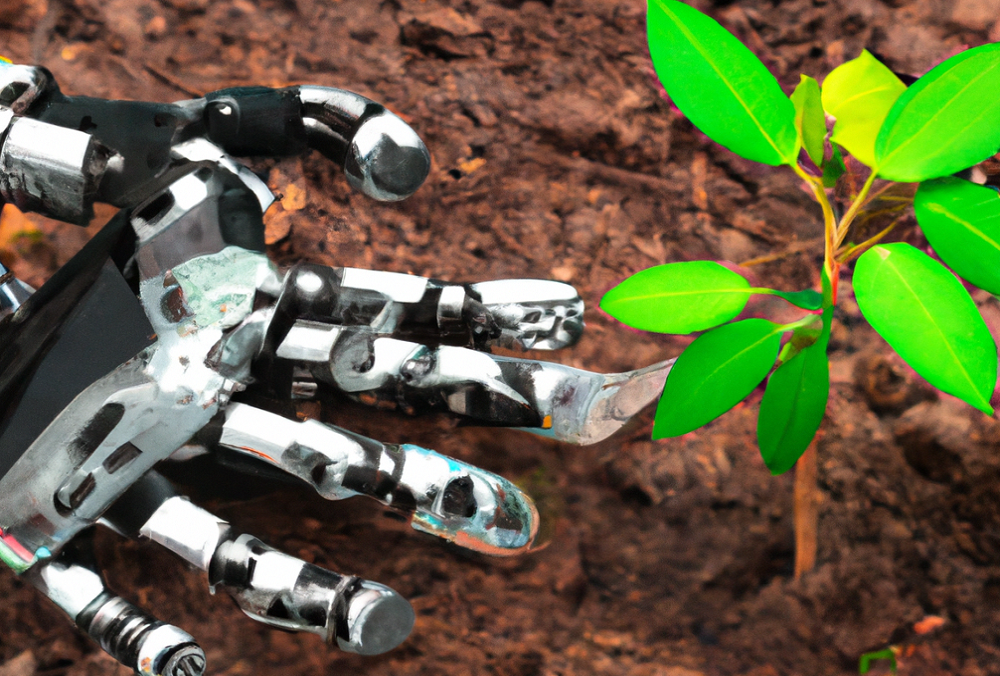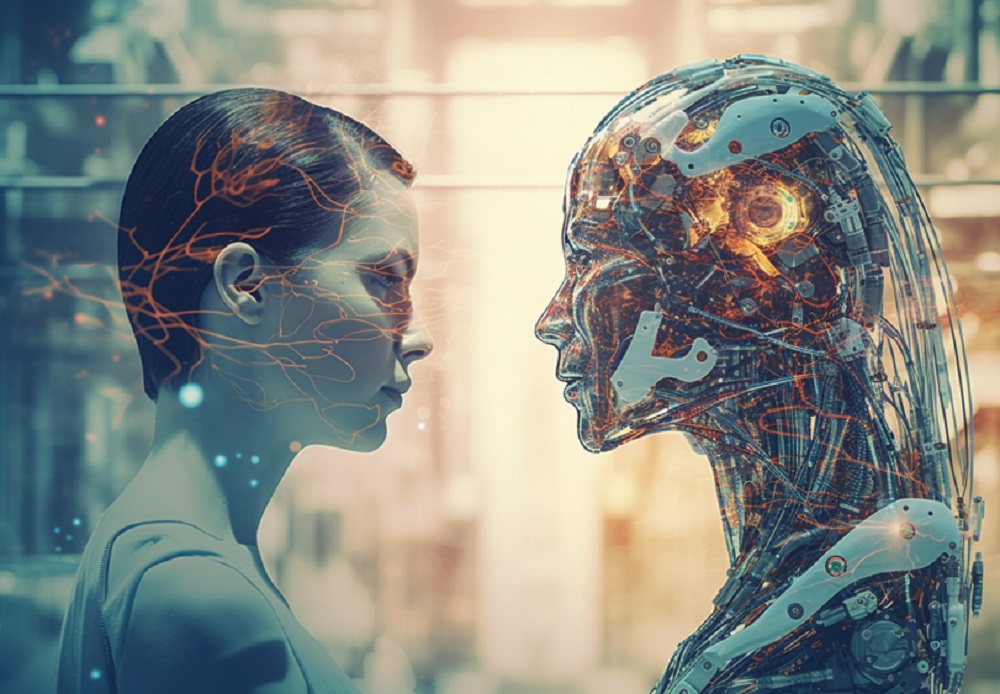Can AI Help Solve Climate Change?
Climate change is a significant challenge facing humanity, and it is widely recognized that urgent action is needed to address it. Artificial Intelligence (AI) has emerged as a powerful tool that can help to mitigate the effects of climate change. In this article, we will explore how AI can help to solve climate change.
Analyzing Climate Data
AI algorithms can be used to analyze vast amounts of data from satellites, sensors, and other sources, helping to identify patterns and trends. This data can be used to develop predictive models that can help to forecast weather patterns, monitor the health of ecosystems, and identify areas at risk of natural disasters.
By analyzing this data, AI can help policymakers make informed decisions about climate change. For example, it can help to identify areas at risk of drought or flooding, allowing policymakers to take steps to mitigate the effects. It can also help to identify the sources of greenhouse gas emissions, allowing policymakers to develop strategies to reduce them.
In addition to its potential benefits for policymakers, AI can also help individuals and communities prepare for and respond to climate change. For instance, AI can be used to analyze social media data and identify areas where individuals are most concerned about the effects of climate change. This information can be used to develop targeted communication campaigns and education initiatives to help people better understand the risks and take action to reduce them.
Optimizing Energy Usage
One of the biggest contributors to climate change is energy usage. As such, AI can play a significant role in mitigating climate change by optimizing energy usage. AI algorithms can be used to optimize the use of energy in buildings, factories, and other settings, helping to reduce energy consumption and lower greenhouse gas emissions.
For example, AI can be used to control heating and cooling systems in buildings, ensuring that they are only used when necessary. By analyzing data on energy usage and building occupancy, AI algorithms can adjust heating and cooling systems in real-time, reducing energy usage and greenhouse gas emissions.
AI can also be used to optimize the use of renewable energy sources such as wind and solar power. By analyzing data on weather patterns and energy usage, AI algorithms can predict the amount of energy that will be generated by renewable sources and help to ensure that it is used efficiently. This can help to reduce the dependence on non-renewable energy sources, further reducing greenhouse gas emissions.
Developing Clean Energy Technologies
To optimizing energy usage, AI can help to develop new clean energy technologies. AI algorithms can be used to analyze data on energy usage and identify areas where energy efficiency can be improved. This data can be used to develop new technologies that are more efficient and produce fewer greenhouse gas emissions.
For example, AI can be used to develop new materials that are more efficient at capturing and storing solar energy. It can also be used to optimize the design of wind turbines, making them more efficient and reducing their impact on the environment. By developing new clean energy technologies, AI can help to reduce the dependence on non-renewable energy sources and lower greenhouse gas emissions.
AI can also be used to improve the efficiency of existing clean energy technologies. For instance, AI algorithms can be used to optimize the performance of solar panels, ensuring that they are operating at maximum efficiency. This can help to increase the amount of energy generated by solar panels and reduce the amount of energy required from non-renewable sources.
Assisting Climate Change Research:
AI can also help to advance climate change research. AI algorithms can be used to analyze data from satellites and sensors, helping researchers to better understand the impacts of climate change on ecosystems and communities. This data can be used to develop more accurate models of climate change, helping researchers to identify the most effective strategies for mitigating its effects.
By analyzing data on climate patterns and their effects, AI algorithms can help researchers identify gaps in their knowledge and areas where further research is needed. This can help to prioritize research efforts and ensure that they are focused on the most critical areas.
Moreover, AI can also help to accelerate the pace of climate change research by automating certain tasks. For example, AI algorithms can be used to analyze large datasets, allowing researchers to focus on developing and refining their models. This can help to speed up the process of developing new insights and identifying effective strategies for mitigating the effects of climate change.
AI Innovations That Can Help Control Climate Change
The following are the five AI innovations that can help control climate change.
1. Smart Grids
Smart grids are electricity networks that use AI algorithms to manage and optimize the flow of electricity. These grids can analyze data in real-time, predicting energy demand and supply, and managing energy usage to minimize waste. By reducing energy waste and optimizing energy usage, smart grids can help to reduce greenhouse gas emissions, making them an essential tool in controlling climate change.
Smart grids can also facilitate the integration of renewable energy sources, such as solar and wind power, into the energy grid. By using AI algorithms to manage the variability of these sources, smart grids can ensure a consistent and reliable supply of electricity, even when the sun is not shining or the wind is not blowing.
2. Energy Efficiency
AI can help control climate change by improving energy efficiency. AI-powered systems can analyze data on energy usage patterns, identifying opportunities for energy conservation and suggesting strategies for optimizing energy usage. For example, AI-powered building management systems can optimize heating and cooling systems to minimize energy consumption while maintaining a comfortable indoor environment.
AI algorithms can also be used to optimize industrial processes, leading to significant reductions in greenhouse gas emissions. By monitoring and optimizing energy usage in manufacturing processes, AI can reduce energy consumption and emissions, making manufacturing processes more sustainable.
3. Agriculture
Agriculture is a significant contributor to greenhouse gas emissions, accounting for approximately 25% of global emissions. AI-powered systems can help to reduce these emissions by optimizing agricultural practices and reducing waste. For example, AI algorithms can analyze soil data and weather patterns to optimize irrigation and fertilization, reducing the need for water and chemicals.
AI can help to reduce food waste by predicting crop yields and managing supply chains more efficiently. By reducing waste in the food system, AI can help to reduce greenhouse gas emissions, making agriculture more sustainable.
4. Carbon Capture and Storage
Carbon capture and storage (CCS) technologies are a crucial tool in the fight against climate change. These technologies capture carbon dioxide emissions from power plants and industrial processes and store them underground, preventing them from entering the atmosphere. AI can help to improve the efficiency and effectiveness of CCS technologies by optimizing the capture process and identifying suitable storage sites.
AI algorithms can be used to predict future emissions and identify potential carbon sources, allowing for targeted efforts to reduce emissions. By combining AI with CCS technologies, we can significantly reduce greenhouse gas emissions and control climate change.
5. Climate Prediction
One of the most significant challenges in controlling climate change is predicting the impacts of global warming accurately. AI-powered climate models can help to improve the accuracy of these predictions, allowing policymakers to make informed decisions about how best to mitigate the effects of climate change.
AI algorithms can also help to identify patterns and trends in climate data, allowing for more accurate predictions of extreme weather events such as hurricanes and droughts. By improving our ability to predict the impacts of climate change, AI can help us to take proactive steps to control its effects.
Bottom-Line:
AI has the potential to play a significant role in addressing climate change. By analyzing vast amounts of data, optimizing energy usage, developing clean energy technologies, and assisting climate change research, AI can help to reduce greenhouse gas emissions and mitigate the effects of climate change. However, there are also potential risks associated with the use of AI, such as the need to ensure that it is used ethically and that it does not exacerbate existing inequalities. It is therefore crucial that the development and deployment of AI are carried out in a responsible and ethical manner, in partnership with policymakers, researchers, and other stakeholders. If we can successfully harness the power of AI, we can make significant progress in mitigating the effects of climate change and creating a more sustainable future for all.






